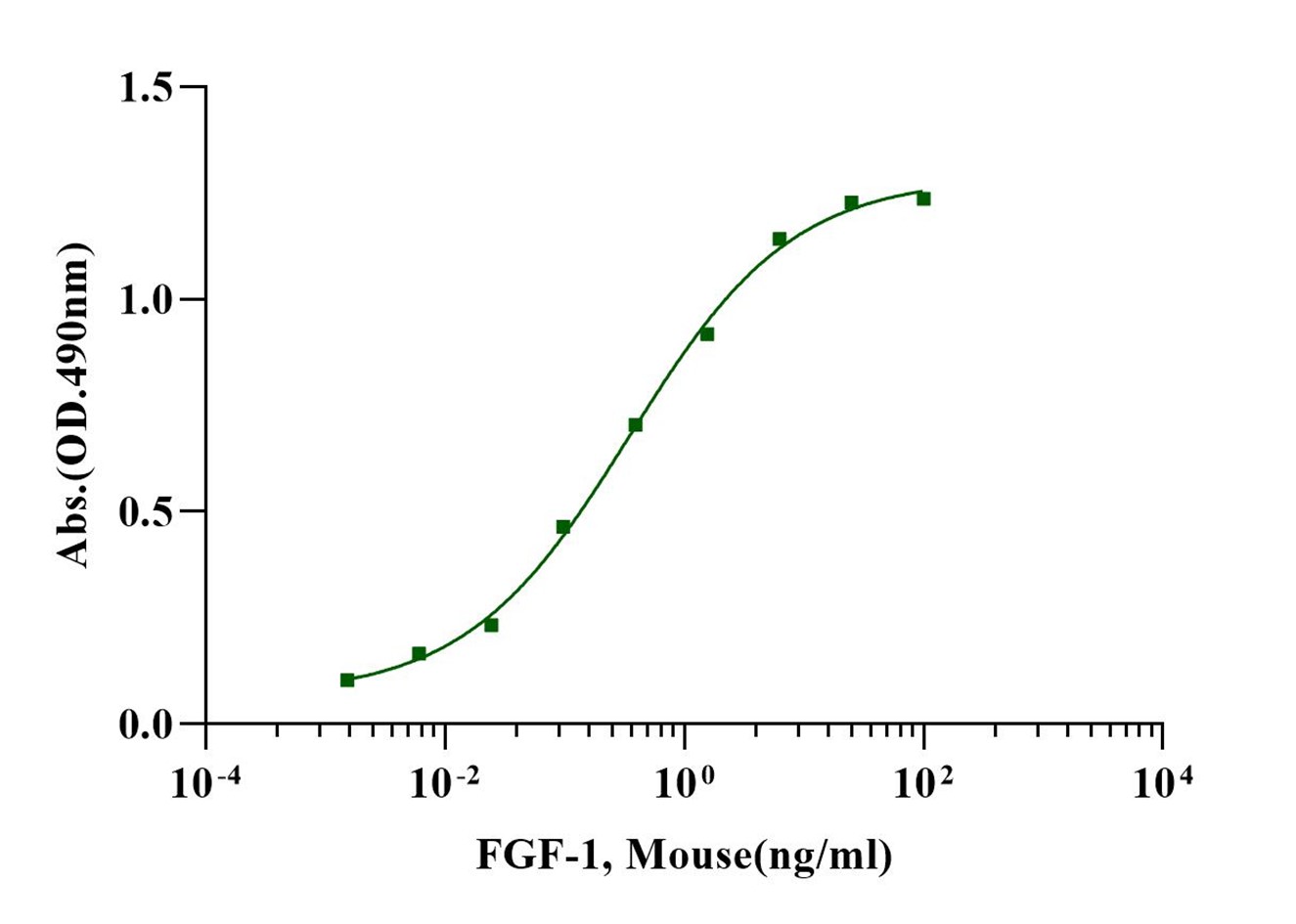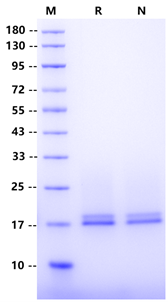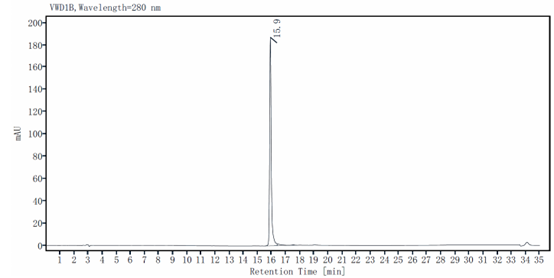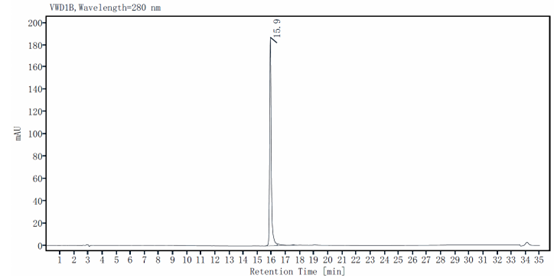Product Details
Product Details
Product Specification
| Species | Mouse |
| Synonyms | FGF-1, Acidic fibroblast growth factor(aFGF), Heparin-binding growth factor 1(HBGF-1) |
| Accession | P61148 |
| Amino Acid Sequence | Phe16-Asp155 |
| Expression System | E.coli |
| Molecular Weight | 17-18kDa |
| Purity | >95% by SDS-PAGE |
| Endotoxin | <1EU/μg |
| Conjugation | Unconjugated |
| Tag | No Tag |
| Physical Appearance | Lyophilized Powder |
| Storage Buffer | 20mM PB, 150mM NaCl, pH7.4 |
| Reconstitution | Reconstitute at 0.1-1 mg/ml according to the size in ultrapure water after rapid centrifugation. |
| Stability & Storage | · 12 months from date of receipt, lyophilized powder stored at -20 to -80℃. · 3 months, -20 to -80℃ under sterile conditions after reconstitution. · 1 week, 2 to 8℃ under sterile conditions after reconstitution. · Please avoid repeated freeze-thaw cycles. |
| Reference |
1、Zakrzewska M. et al. (2008) FGF-1: from biology through engineering to potential medical applications. Crit Rev Clin Lab Sci. 45(1): 91-135. 2、Pye D A. et al. (2000) Regulation of FGF-1 mitogenic activity by heparan sulfate oligosaccharides is dependent on specific structural features: differential requirements for the modulation of FGF-1 and FGF-2. Glycobiology. 10(11): 1183-1192. |
Background
Fibroblast growth factor 1 (FGF-1), known as acidic fibroblast growth factor (FGF-Acidic), is one of the best characterized members of the FGF superfamily. FGF-1 is a powerful mitogen exhibiting strong action on numerous different cell types. It plays a role in various stages of development and morphogenesis, as well as in angiogenesis and wound healing processes. FGF-1 is released extracellularly as a disulfide-linked homodimer and is stored in complex with extracellular heparan sulfate. The association of FGF-1 with heparan sulfate is a prerequisite for its subsequent interaction with FGF receptors. Ligation triggers receptor dimerization, transphosphorylation, and internalization of receptor/FGF complexes.
Picture
Picture
Bioactivity

SDS-PAGE

RP-HPLC






